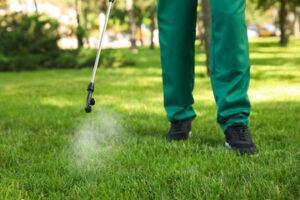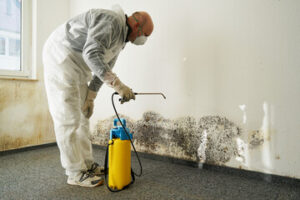When shopping for Small Window Blinds, look for sleek and simple designs that complement a room. Ensure your window coverings are easy to use and safe for kids by teaching household members proper handling techniques.

When measuring for new window blinds, make sure the area is clear of furniture and other items that could obstruct accurate measurements. Double-checking for accuracy helps avoid costly mistakes that can lead to poor fit or inaccurate light control. Visit https://www.customblindsandshadesky.com/ to learn more.
Roller shades are among the simplest window treatment options, yet they offer a wide range of customization choices to enhance their functionality. For example, you can choose from a variety of fabric colors and designs to create a look that complements your interior design style.
Additionally, you can choose from different opacity levels to meet your lighting needs. Sheer fabrics let you enjoy a view of the outdoors while providing some privacy, while room darkening and blackout fabric are ideal for reducing light pollution in bedrooms. Roller blinds are also effective for improving your home’s energy efficiency, although they don’t offer as much insulation as cellular shades or shutters.
When compared to other window coverings, they tend to be relatively lightweight. This makes them easy to install and a breeze to operate. For a more luxurious option, consider adding motorization to your roller shades for the ultimate in convenience and sophistication.
Roller shade fabrics come in a wide range of hues and patterns, from traditional to modern, making them easy to integrate into any interior design scheme. These shades can even complement curtains or valances to create a cohesive and polished look in your space.
Another benefit of roller shades is their sleek and streamlined appearance, which can make them a great choice for small windows. While they can create a bit of a light gap at the bottom of the window, there are trims available that can help reduce this effect.
In addition, they don’t take up much space when rolled up. The cassette header that encases the slats of the shade is barely visible, and it helps to keep your window treatments neatly tucked away when not in use.
Valances
Valances top off your window coverings, providing a finished look for your space. They are available in many styles and can add both a casual or formal appearance, depending on the fabric chosen. They’re also a great way to hide the hardware for a clean, modern look. In addition, they can help block out light and create an airier look for your space.
You can choose from a wide variety of valances, including ruffled, pleated, and grommet designs. Choosing the right one for your home depends on your style and color preferences, as well as how much natural light you want to allow in. For example, a simple ruffled valance provides a soft touch and complements casual decorating styles, while pleated or grommet options work best for more formal rooms.
A valance can come in several different shapes and sizes to match your window’s dimensions. Generally, they are designed to be a fourth of the width of your window’s trim and overlap it by an inch. This will create an illusion of height and make your room feel bigger. You can accent the effect further by dressing a valance in patterns, as they’ll draw more attention to your windows.
Another option for a valance is a swag. These are made with a long piece of fabric that is bunched up or “swung” at the top. This creates a romantic, feminine look. A straight valance is another popular style, consisting of a swath of fabric pulled taut across the window. You can also opt for a sculpted valance that features an architectural design.
Patterns are an easy way to add interest to a valance, but be careful not to overdo it. A busy pattern can overwhelm small windows, making them appear cluttered and crowded. Instead, opt for subtle motifs that draw the eye upward or sideways to visually elongate the space.
When it comes to color, blue valances offer a timeless elegance that complements most any decorating style. Yellow valances can add warmth and coziness to a room, but are best used in more neutral decor. Black valances are another versatile choice, offering an updated, mod look that doesn’t seem dated. For a more classic look, try a patterned black and white toile or pinstripe style.
Curtains
While blinds are a great option for small windows, they don’t have the same decorative punch that curtains can bestow. When layered over your chosen window treatment, curtains add texture and volume to a room for a more lived-in and elevated aesthetic.
Curtains come in a wide variety of colors, styles, and patterns. They’re also available in a number of materials, including linen and cotton. The light colors of these fabrics make them a good choice for small windows, as they will help brighten up the space. You can also opt for printed or textured fabric options, such as jacquard-weave designs.
When choosing a curtain, it’s important to consider how the color and pattern will match the rest of the decor in your space. The wrong color can look garish next to the window, so be sure to get swatches before making any purchases. If you’re pairing your curtains with a blind, you should also be careful to choose the right rod size and hooks for both.
For a more distinguished and sophisticated look, you can pair curtains with 2-inch wood or metal blinds. These blinds feature wider slats than traditional mini blinds and offer a more defined, refined aesthetic that’s perfect for formal spaces like the dining room or living room. They’re also a great choice for high-activity areas, as they’re durable and easy to clean.
Another option is to choose a simple valance above your blinds. These short curtains can be hung with or without a cornice and are available in a variety of styles, from sleek to ruffled. However, you should avoid using too many patterns or long drapes over a small window, as they can make the space feel cramped and busy.
If you’re using a valance, it’s important to match the color of your curtain and blinds together to create a coordinated look. You can also use tiebacks or pelmets to further customize your curtains. For added security, you can hang your curtains using no-drill brackets. These brackets are hammered into the top of the window frame, allowing you to hang your curtains without drilling into the wall or framing.
Venetian blinds
Invented in the 18th century, Venetian blinds were the first style of window covering that allowed people far more control over light and privacy in their homes. They were made of slats that were either wood or aluminum, and they could be tilted in order to change the amount of light that came into a room. The slats could also be stacked upon one another in order to block the sun’s rays. The slats would be held up by cords or fabric tapes. They also could be lowered using these same string and tape systems, but the slats would be folded up to the top of the blind.
The slats on the venetian blinds have holes in them about 5 inches from the ends. These holes are where the lifting threads run through. The slats are held by these threads and can be rotated in order to control lighting, privacy, and temperature. Tilting the slats upwards can keep a room warm, while tilting them downward can cool it.
To clean the slats, you can use a dry cloth or feather duster to wipe each slat down individually. You can also use a damp cloth to remove grease or tougher stains from the slats. In order to maintain the look of your venetian blinds, you can add a decorative touch by adding cloth tape in a variety of colors and patterns. The tapes are designed to add a bit of color and style to your blinds, and they can be used to create a coordinating decor for your home.
Curtains can be hung with the blinds in order to add extra privacy and light control to your room. In addition, curtains can also help keep the blinds in place in order to prevent them from sagging. It is important to match the colors of both the curtains and the blinds in order to achieve a cohesive look.
There are many different options for curtains and blinds, and it’s up to you to decide which is right for your space. Both blinds and curtains have their own unique benefits, but it’s all about deciding what’s best for your specific needs and aesthetic preferences.


